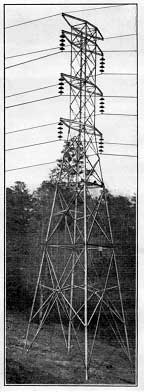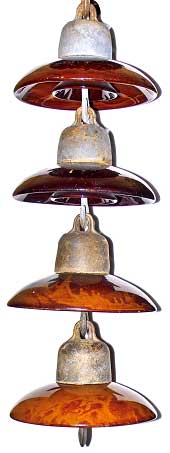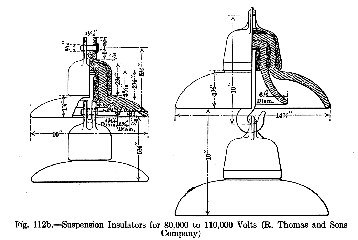1909 - The Power Grid is Born Western power projects were designed as point-to-point transmissions: Stanislaus to San Francisco or Kern-1 to Los Angeles. But in the South, things were different. Within a hundred-mile radius of Charlotte, NC were located 360 cotton mills operating 4,744,458 spindles, 110,258 looms and 2717 knitting machines. The diversity of load centers led the Southern Power Co. to build the world’s first recognizable power grid. The backbone of this grid was built on steel towers and went into service in 1909 at 110kV. The system as a whole had 1300 miles of line and handled over 100,000 horsepower. The insulators used were 2-part Thomas suspension units, hung in strings of four. They were Thomas’ answer to Locke’s Duncan patent. They used hook-and-eye coupling instead of the split-pin clevis coupling used by Locke. They had curved outer skirts, much like those of multipart pin-type insulators. From a distance they present a distinctly modern appearance. In just 20 years the industry had innovated its way from telegraph technology to the suspension insulator technology used in high-tension systems today. WOW! |
 |
 |
In the fall of 2003, we had a long, frustrating hunt in North Carolina and northeast Georgia, searching for these beautiful but elusive insulators. The story was published in Power Line Explorer Journal, Vol. V, No. 1, and is posted on Elton’s www.r-infinity.com web site. In the end, we found a few steep sites in the most rugged areas where a few units had rolled down out of the right-of-way: A great hunt! From 1909 it would take the industry another 20 years to evolve the technology to the high level of reliability we expect of modern power systems, but the basic enabling art form had been invented – the way was clear! |
